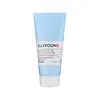What's inside
What's inside
 Key Ingredients
Key Ingredients

 Benefits
Benefits

 Concerns
Concerns

No concerns
 Ingredients Side-by-side
Ingredients Side-by-side

Water
Skin ConditioningPropanediol
SolventGlycerin
HumectantSqualane
EmollientCaprylic/Capric Triglyceride
MaskingPolyglyceryl-3 Methylglucose Distearate
Emulsifying1,2-Hexanediol
Skin ConditioningAmmonium Acryloyldimethyltaurate/Vp Copolymer
Carbomer
Emulsion StabilisingTromethamine
BufferingGlyceryl Caprylate
EmollientEthylhexylglycerin
Skin ConditioningBetaine
HumectantCeramide NP
Skin ConditioningTocopherol
AntioxidantWater
Skin ConditioningGlycerin
HumectantPropanediol
SolventPersea Gratissima Oil
Skin ConditioningC13-16 Isoalkane
SolventC10-18 Triglycerides
EmollientPrunus Amygdalus Dulcis Oil
Skin ConditioningCetyl Alcohol
EmollientGlyceryl Behenate
EmollientCetearyl Alcohol
EmollientGlyceryl Caprylate
EmollientSimmondsia Chinensis Seed Oil
EmollientAnigozanthos Flavidus Extract
Skin ConditioningCeramide AP
Skin ConditioningCeramide EOP
Skin ConditioningCeramide NP
Skin ConditioningCholesterol
EmollientCollagen
MoisturisingDunaliella Salina Extract
Skin ConditioningPhytosphingosine
Skin ConditioningBehenic Acid
CleansingGlyceryl Stearate
EmollientHelianthus Annuus Seed Wax
Skin ConditioningJojoba Esters
EmollientPolyglycerin-3
HumectantPolyglyceryl-10 Stearate
Skin ConditioningPolyglyceryl-6 Behenate
Emulsion StabilisingSclerotium Gum
Emulsion StabilisingSodium Cetearyl Sulfate
CleansingSodium Stearoyl Glutamate
CleansingTriethyl Citrate
MaskingXanthan Gum
EmulsifyingCaprylhydroxamic Acid
Citric Acid
BufferingPotassium Sorbate
PreservativeSodium Benzoate
MaskingSodium Levulinate
Skin ConditioningParfum
MaskingWater, Glycerin, Propanediol, Persea Gratissima Oil, C13-16 Isoalkane, C10-18 Triglycerides, Prunus Amygdalus Dulcis Oil, Cetyl Alcohol, Glyceryl Behenate, Cetearyl Alcohol, Glyceryl Caprylate, Simmondsia Chinensis Seed Oil, Anigozanthos Flavidus Extract, Ceramide AP, Ceramide EOP, Ceramide NP, Cholesterol, Collagen, Dunaliella Salina Extract, Phytosphingosine, Behenic Acid, Glyceryl Stearate, Helianthus Annuus Seed Wax, Jojoba Esters, Polyglycerin-3, Polyglyceryl-10 Stearate, Polyglyceryl-6 Behenate, Sclerotium Gum, Sodium Cetearyl Sulfate, Sodium Stearoyl Glutamate, Triethyl Citrate, Xanthan Gum, Caprylhydroxamic Acid, Citric Acid, Potassium Sorbate, Sodium Benzoate, Sodium Levulinate, Parfum
 Reviews
Reviews

Ingredients Explained
These ingredients are found in both products.
Ingredients higher up in an ingredient list are typically present in a larger amount.
Ceramide NP is a type of ceramide and formally known as ceramide 3.
Ceramides are intercellular lipids naturally found in our skin that bonds dead skin cells together to create a barrier. They are known for their ability to hold water and thus are a great ingredient for dry skin.
Ceramides are an important building block for our skin barrier. A stronger barrier helps the skin look more firm and hydrated. By bolstering the skin ceramides act as a barrier against irritating ingredients. This can help with inflammation as well.
If you would like to eat ceramides, sweet potatoes contain a small amount.
Read more about other common types of ceramides here:
Ceramide AP
Ceramide EOP
Glycerin is already naturally found in your skin. It helps moisturize and protect your skin.
A study from 2016 found glycerin to be more effective as a humectant than AHAs and hyaluronic acid.
As a humectant, it helps the skin stay hydrated by pulling moisture to your skin. The low molecular weight of glycerin allows it to pull moisture into the deeper layers of your skin.
Hydrated skin improves your skin barrier; Your skin barrier helps protect against irritants and bacteria.
Glycerin has also been found to have antimicrobial and antiviral properties. Due to these properties, glycerin is often used in wound and burn treatments.
In cosmetics, glycerin is usually derived from plants such as soybean or palm. However, it can also be sourced from animals, such as tallow or animal fat.
This ingredient is organic, colorless, odorless, and non-toxic.
Glycerin is the name for this ingredient in American English. British English uses Glycerol/Glycerine.
Learn more about GlycerinGlyceryl Caprylate comes from glycerin and caprylic acid, a fatty acid from coconut. It has emollient and emulsifier properties.
As an emollient, it helps hydrate your skin. Emollients work by creating a barrier on your skin to trap moisture in, helping to keep your skin soft and smooth.
On the other hand, emulsifiers prevent ingredients (such as oil and water) from separating.
Learn more about Glyceryl CaprylatePropanediol is an all-star ingredient. It softens, hydrates, and smooths the skin.
It’s often used to:
Propanediol is not likely to cause sensitivity and considered safe to use. It is derived from corn or petroleum with a clear color and no scent.
Learn more about PropanediolWater. It's the most common cosmetic ingredient of all. You'll usually see it at the top of ingredient lists, meaning that it makes up the largest part of the product.
So why is it so popular? Water most often acts as a solvent - this means that it helps dissolve other ingredients into the formulation.
You'll also recognize water as that liquid we all need to stay alive. If you see this, drink a glass of water. Stay hydrated!
Learn more about Water